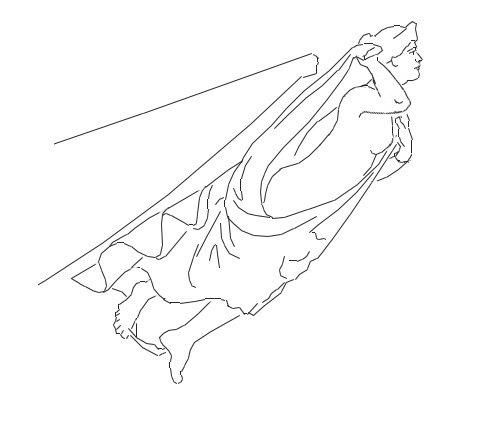-
Posts
13,368 -
Joined
-
Last visited
Content Type
Profiles
Forums
Gallery
Events
Everything posted by druxey
-
I interpret the right hand holding the bunched drapery, so is mainly hidden under the drape. Am I wrong?
- 3,560 replies
-
- clipper
- hull model
-
(and 2 more)
Tagged with:
-
- 3,560 replies
-
- clipper
- hull model
-
(and 2 more)
Tagged with:
-
Thanks for the feedback. It was difficult to render the right arm from the differing angles of the various photos.
- 3,560 replies
-
- clipper
- hull model
-
(and 2 more)
Tagged with:
-
It's the horizon lines that show the tilt of the prints are different ones of the same photo. All right, gentlemen, my two cents' worth is added!
- 3,560 replies
-
- clipper
- hull model
-
(and 2 more)
Tagged with:
-
Perhaps you should re-christen the model "Bad Luck Boney", Dan. The years have not been kind to her.
- 95 replies
-
- POW
- Bone model
-
(and 2 more)
Tagged with:
-

Sloping deck
druxey replied to Don Case's topic in Building, Framing, Planking and plating a ships hull and deck
Meanings and usage of words change over time. I do not know when 'camber' was adopted to replace 'round up' but suspect it was in the mid-nineteenth century. However, camber was the descriptive word used to describe the deck construction seen in the draught above. Steel, Naval Architecture page 14,1805: CAMBER. Hollow or arching upwards. the decks are said to be cambered when their height increase toward the middle, from stem and stern, in the direction of the ship's length. -
I'm surprised that you can't source a Proxxon in Canada. Try: www.chippingaway.com or www.Nutmegwoodworking.ca
-

Sloping deck
druxey replied to Don Case's topic in Building, Framing, Planking and plating a ships hull and deck
No, although it does help drain. The deck is sloped down (this is actually describing 'camber' as the word was used then) to the hawse holes. This allowed the cable to come up on the weather deck. If a deck lower, the hawse holes would be too close to the waterline. On this plan the hawse holes and scupper are not shown. To clarify; 'camber' is the rounding down of a deck as seen longitudinally and 'round up' is the correct term for the transverse (athwartships) curve of the deck and beams. -
Do you ever use miniature broaches to clear small holes? I find them very helpful. The new crowsfoot looks good.
- 95 replies
-
- POW
- Bone model
-
(and 2 more)
Tagged with:
-
Looks pretty nice to me. What kind of wood are you using? If you run the grain diagonally it will be less likely to break.
-
Welcome back and enjoy your health now!
-
'Quarter galleries' in English. They are always a challenge with the compound angles involved.
-
Well beaten, Michael! That was not an easy shape to raise. Copper looks much nicer than plastic, don't you think?
- 2,215 replies
-
Aaargh! The joys and frustrations.... I'm glad that you were able to locate the euphroe. What will you use for the crowsfeet line? Fly fishing 6-0 ?
- 95 replies
-
- POW
- Bone model
-
(and 2 more)
Tagged with:
-
Well, darn! Just like the real thing! How long did it take for you to find that particular branch?
- 186 replies
-
- keelless
- reverse clinker
- (and 4 more)
-
You will only enjoy working bone if your sense of smell is impaired, Bob. Even using hand tools, the odor is apparent.
- 95 replies
-
- POW
- Bone model
-
(and 2 more)
Tagged with:
-
I'm still impressed by both your ambition and level of achievement while you were still a teenager, Steven.
- 740 replies
-
- Tudor
- restoration
-
(and 4 more)
Tagged with:
-
What, no repousée sink made in your silversmith's friend's shop, Michael? Mine would be very displeased. Which reminds me, you never did get back to me about a Bramah lock for the model. Looking lovely as usual, joking aside.
- 2,215 replies
About us
Modelshipworld - Advancing Ship Modeling through Research
SSL Secured
Your security is important for us so this Website is SSL-Secured
NRG Mailing Address
Nautical Research Guild
237 South Lincoln Street
Westmont IL, 60559-1917
Model Ship World ® and the MSW logo are Registered Trademarks, and belong to the Nautical Research Guild (United States Patent and Trademark Office: No. 6,929,264 & No. 6,929,274, registered Dec. 20, 2022)
Helpful Links
About the NRG
If you enjoy building ship models that are historically accurate as well as beautiful, then The Nautical Research Guild (NRG) is just right for you.
The Guild is a non-profit educational organization whose mission is to “Advance Ship Modeling Through Research”. We provide support to our members in their efforts to raise the quality of their model ships.
The Nautical Research Guild has published our world-renowned quarterly magazine, The Nautical Research Journal, since 1955. The pages of the Journal are full of articles by accomplished ship modelers who show you how they create those exquisite details on their models, and by maritime historians who show you the correct details to build. The Journal is available in both print and digital editions. Go to the NRG web site (www.thenrg.org) to download a complimentary digital copy of the Journal. The NRG also publishes plan sets, books and compilations of back issues of the Journal and the former Ships in Scale and Model Ship Builder magazines.






